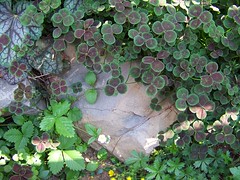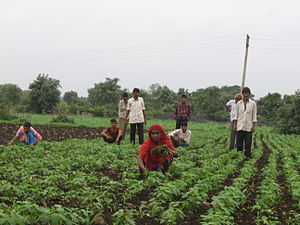For gardeners, nothing in the world stinks more than working your butt off in the hot sun to care for and maintain your
garden, only to have something go terribly wrong due to an unexpected
problem or oversight. You worked hard for your crops so the last
thing you want is for something to go wrong and destroy all of your hard work.
Don't let any of these
mistakes happen to you! Be prepared with this
list of 7 easy-to-make gardening mistakes to watch out for:
- Planting in the wrong place – Always take care to look closely at the growing needs of all of your intended crops. Make sure to read the sun, water, and weather requirements for each of the fruits and vegetables that you want to grow, and plant and place your garden beds or planters accordingly. Better yet, you should take careful stock of your available space before you even decide what to plant, examining the soil, drainage, and even how and where the sun hits best during planting and growing months. Taking a little time to survey your yard beforehand can save you a heap of trouble down the road.
- Buying diseased or unhealthy plants – If you're the type that just wants to buy starter plants for your garden and pop them in the ground, make sure to pay extra special attention to the plants you're buying. The gardeners who took care of these plants before you might not be as diligent or as careful as you are, so take a close look at the quality and color of the plant's leaves when making your choices. Also make sure to look closely for insect damage, especially if you're bringing new plants to an existing garden bed. The last thing you want to do is introduce pests to a clean, insect-free garden that you've worked hard on.
 |
| Transplanting plants from starter pots to the garden (Photo credit: Wikipedia) |
- Not preparing the soil – Or even trying to fix a preparation mistake too late! This goes hand in hand with the first potential mistake; you should make sure that your soil is prepared and ready to take in all the new plants you'll be planting in it. Soil testing kits are cheap and easy to use and can be found at your local gardening or home improvement store. Soil varies greatly by region and each type of soil needs something different to make it suitable for your plants. If you plant without preparing, be incredibly careful because doing work on the soil while new plants are establishing their root systems can have a disastrous effect on their growth and general health.
- Not watching your watering – Each plant has their own needs and requirements when it comes to watering so you should be especially careful if you have a wide variety of fruits and vegetables in your garden. Overwatering can drown your plants' roots which will cause them to rot and kill your plant. On the other hand if you don't water enough your plants will get dehydrated, sometimes causing even more damage than if you had watered too much. (I made this mistake back in the fall when we had moved into our new house, and for the first time all summer, we didn't get rain for several weeks. I forgot to water my newly transplanted strawberry plants, and several of them died.) You should work to find a good balance and make sure to group plants with similar watering needs together to make things easier on yourself. If you're worried about watering yourself you can always purchase an automatic irrigation system which will take care of the work for you.
- Not accounting for space – Of course you want your garden to bursting at the seams with fresh fruits and veggies to enjoy, but if you pack it too full then you're going to end up in a lot of trouble down the road when instead of tiny seedlings you've got an overcrowded garden full of growing plants. Always make sure to zone your beds and take into account what size the plants will be when they're grown as you plan out your available space.
- Planting an overly invasive species – Reading your plants' tags can give you good insight on what growing them will be like. Sure a plant that's hardy, grows well in most climates, and spreads easily sounds like it'll be a snap to take care of, but if you're not careful you could end up seeing your tiny garden bed spread well beyond the confines of its walls. Always make sure to read your tags closely and keep any potential rampant growers well in check.
- Taking the wrong approach to weeding – Without a doubt you're going to end up with weeds in your garden. I'm not saying you're a bad gardener, it's just an inevitability of nature that these tenacious plants will find a way in and stay there as best they can. When you're preparing your space, make sure not to use any harsh chemicals that are going to sit in your soil and make the space just as inhospitable for your garden as it is for the weeds. While you don't need to be inspecting your bed with a magnifying glass every hour of every day it's a good idea to at least check your bed at least once a day for any offending invasive species before they get out of control and start taking over your garden.
 |
| Wild garlic mustard is a common invasive weed in some areas. (Photo credit: Wikipedia) |
Gardening can be hard work, but this isn't
meant to make it sound off-putting. On the contrary, now that you're
armed with the knowledge of what not to do in your garden, you can plant a beautiful garden with confidence that you won't make these mistakes yourself!







